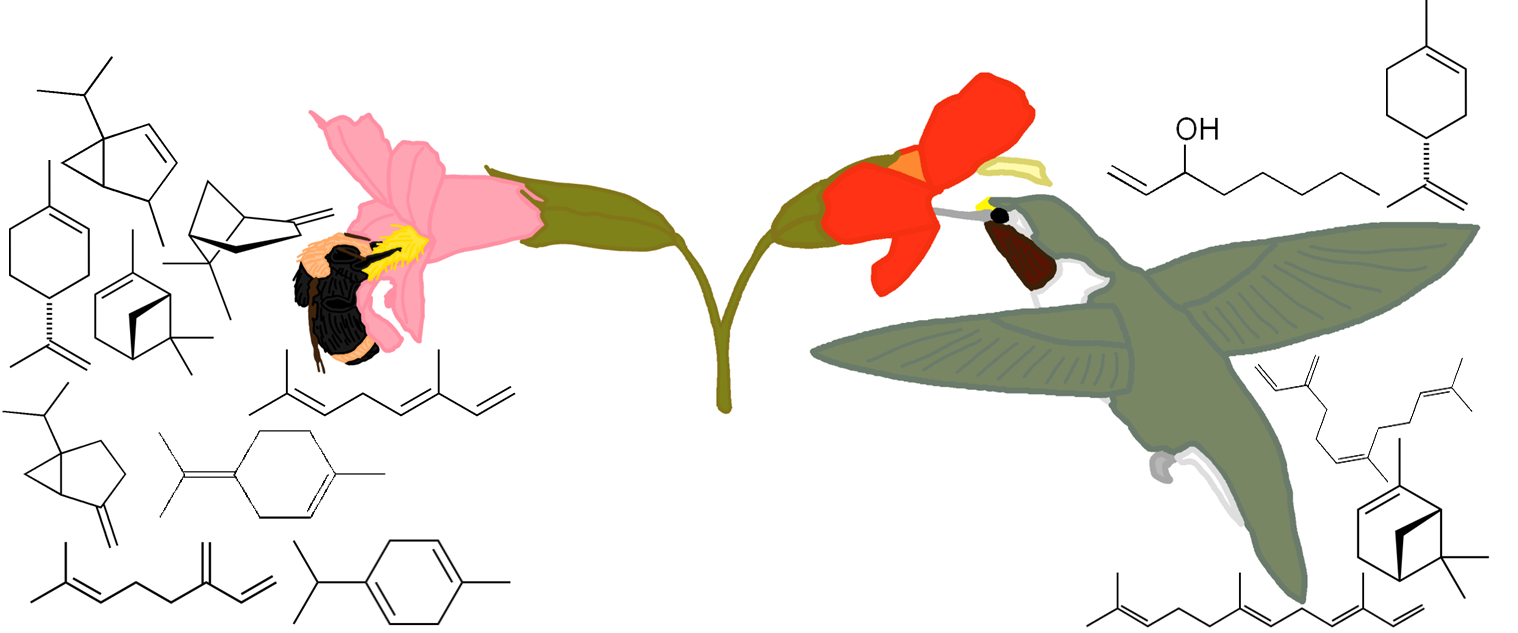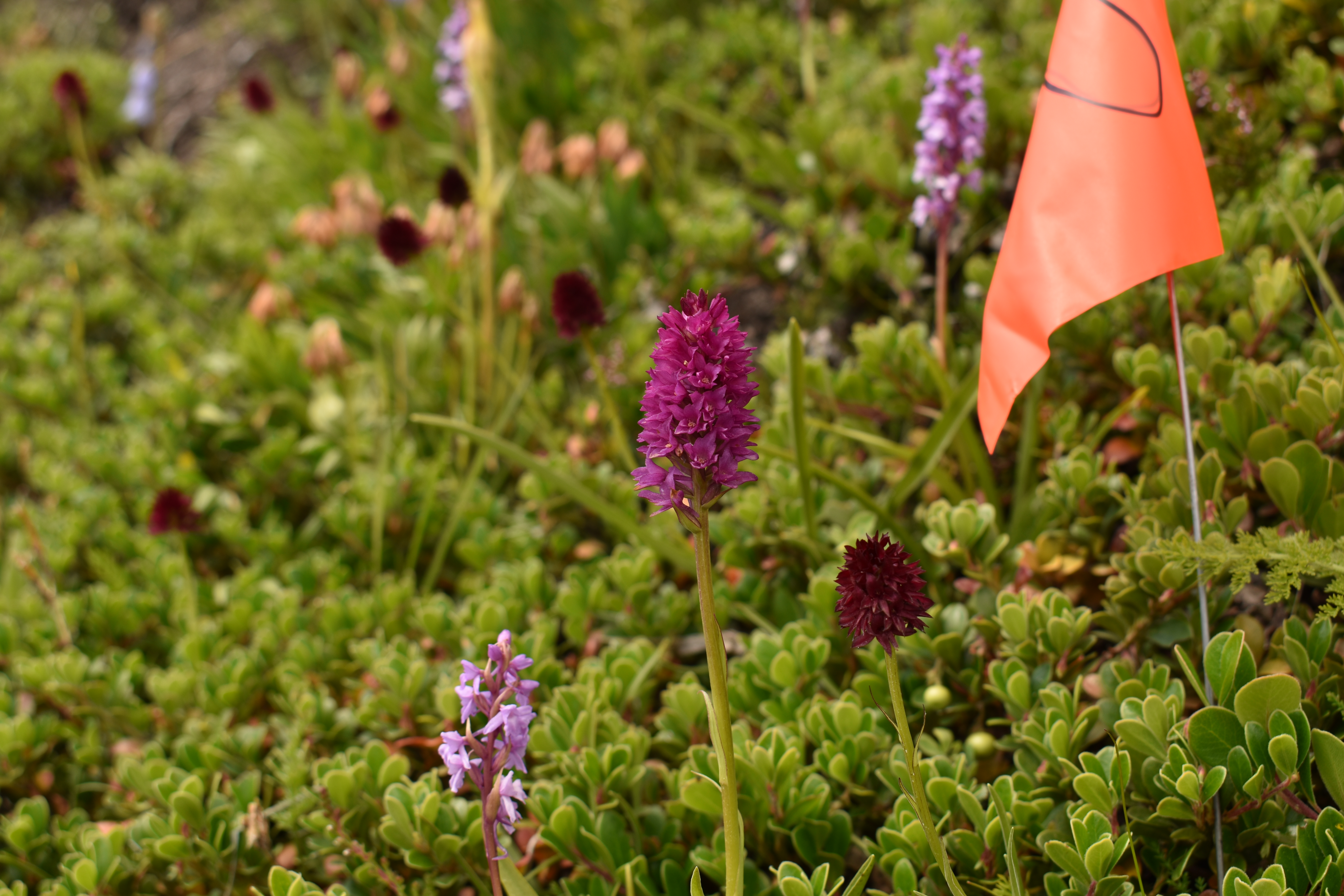

| Home | RESEARCH | Lab Members | Publications (Google Scholar page) |
Diversity, Equity, and Inclusion | Join the Lab | Kelsey's CV | Kelsey at JIC |
Research in the Byers Lab falls mainly under three areas: the evolutionary ecology and genetics of floral scent and pollination in Mimulus monkeyflowers; floral trait integration and hybridization in Gymnadenia orchids; and the role of plant scent in driving pollination and herbivory in crop plants.

Flowers in the genus Mimulus (Phrymaceae), commonly called monkeyflowers, come in a vast array of shapes, sizes, colors... and, perhaps, scents! Building on Kelsey's PhD work which showed that bumblebee-pollinated Mimulus lewisii and hummingbird-pollinated M. cardinalis differ in their floral scent and that this affects bumblebee visitation (Byers et al. 2014 J. Exp. Biol.), we are seeking to further understand the role of floral scent in driving species diversification in Mimulus. To approach this, we are surveying as many species of Mimulus as possible for their floral scent and other potential pollinator-attracting traits and combining this with a Mimulus floral visitor/pollination system database that Kelsey has collected (manuscript in prep).
Other projects in the lab involving Mimulus include studying invasive and native populations of M. guttatus (the common yellow monkeyflower) to understand how its invasion outside North America might have changed its floral traits and ability to attract local pollinators.
Building on Kelsey's genetic work on floral scent during her PhD (Byers et al. 2014 Plant J.), we are also seeking to understand how floral scent production is regulated in M. lewisii. Preliminary work has identified a QTL (quantitative trait locus) that seems to act as a major regulator of global floral scent production in M. lewisii and we would like to know more about this regulator.

Gymnadenia (Orchidaceae, the fragrant orchids) is a genus of hardy Alpine orchids native to Eurasia. Where G. conopsea (Eurasian) and G. rhellicani (central European Alps) grow in sympatry, rare hybrids (0.8% of the population at one site) pop up in the population. These hybrids are phenotypically distinct from their progenitors in a number of floral traits including whole-plant and individual-flower morphology, color, and scent.
Working at two field sites in Chandolin, Wallis/Valais, Switzerland, and Puflatsch, Südtirol, Italy, we seek to answer two questions. First, what barriers keep the parent species separated such that hybrids are so rare? Preliminary data suggest that pollinator isolation is the major barrier preventing hybrid formation, but that temporal isolation and hybrid sterility may also play additional roles in reproductive isolation. Second, what does the integration of different classes of floral traits (e.g. color and scent) in the parents and their hybrid suggest about how floral traits are regulated in the parent species? Fieldwork has taken place in 2015, 2016, 2021, and 2022, and a manuscript is in preparation.
To determine the genetic origins of the hybrids - are they F1s, backcrosses, etc? - we are also performing whole genome sequencing of the parents and hybrids. This is feasible as they are all diploids, but complicated by their large genome size - about 3.4 Gbp on average.
We are currently working on a new pair of projects studying the role of plant scent in pollination and herbivory in economically important crops in the UK! More details to follow.
| Reach Kelsey by email: Kelsey.Byers (at) jic.ac.uk |